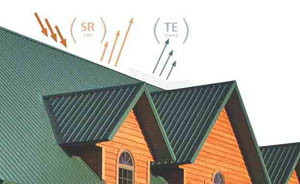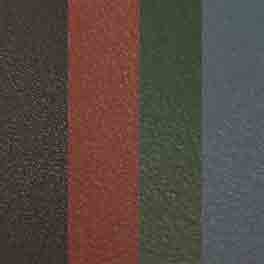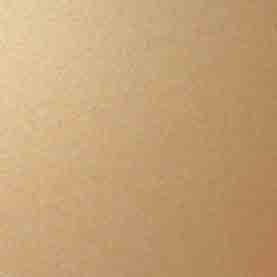Architectural Coatings: Six Tips for Selecting Colors That Last

Exterior color selection is imperative to the aesthetics of a building. However, some may not fully understand the external factors that play into the performance and longevity of specific colors. Below, color experts Mike Churchill and Jay Register from Valspar provide tips, facts and overall information you may want to consider when selecting colors for your next building project.
1.) Color Selection Through Warranties
While it’s easy to request a 30-year warranty for the final color you’ve selected for your next building project, sometimes, with a given color, a 30-year warranty cannot be attained. Certain pigments don’t have the requisite durability to withstand environmental forces that can cause degradation to the coating.
From a scientific standpoint, the main causes of degradation from environmental forces are ultra-violet light and water from the air in the form of humidity, dew or rain via hydrolysis (splitting of chemical bonds by the addition of water). These combined forces can break down the resin within the coating and begin to expose the pigment particles. Over time, this process will either erode or wash off the surface of the coating. The types of pigments that withstand these environmental forces for long periods of time tend to be a smaller palette of colors.
If you’re looking for a color with a long warranty, high-performing inorganic pigments are key from a durability standpoint. They’re made from metal oxides and mixed metal oxides that create a high resistance to degradation. Inorganic pigments typically come in colors such as beige, tan, brick red and other earth-tone colors.
If you’re looking for bright and intense colors for your building to have a unique look, organic pigments achieve these colors but do not withstand degradation as well as their inorganic counterparts. They’re carbon based and made from petroleum compounds that produce bright colors. Organic pigments typically come in colors such as fire red and blaze orange.

2.) Achieving an Energy Star Rating With Solar Reflective Pigments
If one of the main goals for your building project is to achieve a high Energy Star or LEED rating, solar reflective pigments offer a great solution to increase a building’s sustainability efforts. Pigments reflect and absorb energy from sunlight in three regions of the electromagnetic spectrum: ultraviolet, visible and infrared regions. A pigment’s color is determined by the absorption and reflection of energy in the visible region. The key to a solar reflective pigment is that they reflect the sun’s infrared energy away from the building, rather than absorb it. This can significantly reduce a building’s cooling costs, thermal emittance and urban air pollution as well as provide less dependence on energy resources.
Most mixed metal oxide or inorganic pigments provide good solar reflectance and can easily be matched. However, certain pigments such as darker blues, greens and blacks offer limitations when selecting solar reflective pigments because they naturally absorb more in the infrared region, which can make it difficult to achieve Energy Star’s required .25 solar reflectance. If desired, compromises can still be made to accomplish a darker color, but multiple pigments may have to be mixed together to achieve its solar reflective value. As a general rule of thumb: the lighter the color, the better the solar reflective value the coating will have.

When sunlight is absorbed in a coatings’ surface, it generates heat. High solar reflectance determines the solar insulation effect.
3.) Consider the Building’s Climate
Environmental factors play an important role in the durability or effectiveness of a coating. Additionally, differing light exposures can alter a color’s overall look. Certain climates pose different challenges when selecting a color for your next building project. When looking into various colors, research the building’s potential climate: will the building be located in a desert climate where it’s exposed to higher sunlight and heat, a northern climate where it’s exposed to harsh winters or a marine environment where it’s exposed to humidity and rain?
In the examples below, there are specific pigments that prove more durable or effective to a building’s climate than others:
- In a desert climate, choosing a solar reflective pigment helps direct sunlight away from the building to reduce its cooling costs. Inorganic pigments are most commonly used in desert climates to resist fading from the sun.
- In a northern climate, darker colors with a low solar reflective value often work best to draw the sun’s heat to the building that enhances its heating during the winter months.
- In a marine climate, humidity and atmospheric chloride levels are higher compared to other climates. This can accelerate both hydrolytic degradation of the coating and corrosion of the underlying substrate. Inorganic pigments and the underlying primer selection are critical to help combat accelerated degradation in a marine climate.
These considerations are key factors when selecting appropriate colors that will coincide with your end goals for the building.
4.) In Some Scenarios, Adding a Clear Coat Can Increase an Organic Pigment’s Durability
Most coating systems are two coated: a primer and a top coat. If you have chosen a bright organic color, applying a third clear coat in some scenarios can indeed add another layer of protection to achieve the color you’re looking for. However, there are some circumstances where applying a clear coat to certain organic pigments will not add a significant measure of protection. If the pigment doesn’t have the requisite durability to begin with, then a clear coat may improve it some, but it will not take a bad pigment and make it into a great one. If an organic pigment is close to being good, then the clear coat will bring the pigment up to a higher durability range.
Even with a clear coat, sometimes the color selection will still be limited, but at Valspar, they encourage customers to work with them to identify similar color options that allow customers to achieve a longer lasting coating without sacrificing aesthetics.
5.) Effects Coatings Add Aesthetic Benefits
If you’re looking to differentiate your building’s appearance, applying a special effects coating can offer a great opportunity for a building to stand out compared to others. Special effects coatings are developed to provide textured, shimmering and pearlescent appearances that still maintain the same amount of performance versus non-effect coatings. Their colors are combinations of a basecoat color and the effect pigment chosen for the clear coat. There can be a significant variety of colors, but some combinations provide more significant changes in color based on the viewing angle.
Some examples of effects coatings are:
- Textured effects coatings: These coatings offer a raised texture to redirect light for enhanced visual depth, with shading to mirror the eye’s natural horizontal motion.

Textured effects coatings redirect light for enhanced visual depth [Valspar WeatherXL Crinkle Finish featured above]
- Shimmering effects coatings: Much like the color of gold flake, these coatings create a reflective and sparkling effect that make building’s exterior “pop.”

Gold flake effects coatings create reflective and sparkling visuals
- Pearlescent effects coatings: These coatings appear to shift in color when viewed from different angles or sunlight, much like a chameleon.

Much like a chameleon, pearlescent effects coatings shift in color when viewed from different angles.
If you’re seriously considering an effects coating for your building, make sure to order different samples of potential colors and styles so that you can view them up close in your building’s natural environment.
6.) Matching Your Favorite Colors
Color swatch booklets can provide a great point of reference to select a color, but it is important to recognize that most of the colors in a color swatch booklet are composed of pigments that do not have the durability characteristics for use in the field. All that is required of these pigments is that they dry on a piece of paper.
After a color is submitted to a manufacturer, there may be a limited palette of pigments that have the durability characteristics to meet a desired warranty. The process to successfully match a color involves technology, chemistry and appropriate lighting. Light varies in an exterior environment depending on the position of the sun relative to the earth. When it’s overhead, you have a uniform distribution of light across the visible spectrum – a daylight match. However, at sun up or sundown, visible light is shifted towards the red end of the spectrum – a horizon match.
The color of an object is determined by two components: the chemistry of the object’s pigmentation and the type of visible light illuminating the object. By utilizing only one light source, a given color could be matched with multiple pigment combinations. However, if you change the light source, each of the matches will look visually different from one another and some differences can be quite dramatic. Colors that shift relative to one another when a light source changes are metamers, or to be exhibiting metamerism – they weren’t produced with the same pigmentation.
To be sure that a color match is not metameric, the final color is viewed under three light sources: daylight, horizon and fluorescent lights. When presented with a color sample containing pigments that have poor exterior durability characteristics, the coatings manufacturer will substitute durable pigments and will produce a daylight-only match – also known as a coatings industry default match – which results in a durable, but now metameric match. The final review of the matched panels should be done at midday outdoors and not in an office setting with fluorescent lights. If you review the panel under fluorescent lights, it may not appear to be as close a match as desired.
Final thoughts
No building project is the same – many factors are prevalent when selecting a color and the authors hope that you’ll take these tips into account the next time you begin a building project. Additionally, manufacturers have representatives available to provide information on questions specific to your projects and will work with you to find the best coating solution for your building. To gather more in-depth information about architectural coatings or to download samples for your next project, head to: http://www.valsparcoilextrusion.com.
Looking for a reprint of this article?
From high-res PDFs to custom plaques, order your copy today!





